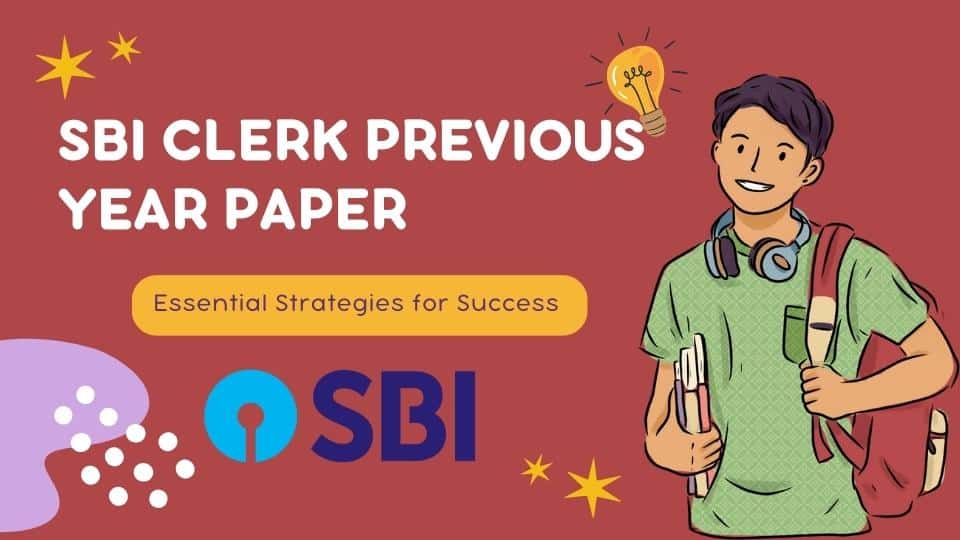The State Bank of India (SBI) Clerk examination is a highly competitive test requiring thorough preparation. One of the most effective strategies to excel in this exam is to practise with the previous year’s question papers.
These papers serve as invaluable resources for understanding the exam pattern, identifying essential topics, and gauging one’s level of preparedness. This article will provide essential tips and tricks to navigate the SBI clerk previous year paper effectively. Following these guidelines can enhance your chances of scoring well and securing your dream job at SBI.
Understand the Exam Pattern
Before delving into solving the SBI clerk previous year paper, it is crucial to understand the SBI Clerk exam pattern clearly. Familiarise yourself with the sections, marking scheme, and time allotted for each section.
By grasping the overall structure of the exam, you can approach the previous year’s papers strategically, focusing on the areas that carry more weight and require greater attention. Understanding the exam pattern will help you familiarise yourself with the format of the SBI Clerk exam, including the number of sections, marking scheme, and time constraints.
Also Read:
Identify Important Topics
Analysing the previous year’s papers can give you insights into the topics frequently asked in the SBI Clerk exam. Carefully observe the distribution of questions across different sections and note the recurring themes. Doing so lets you prioritise your preparation and allocate more time to studying these crucial topics. This approach will help you thoroughly cover the essential concepts and increase your scoring chances.
Time Management
Time management is vital in excelling in any competitive examination, and the SBI Clerk exam is no exception. Solving previous years’ papers under timed conditions can help you enhance your speed and accuracy.
Regular practise will enable you to identify time-consuming sections or questions that require more attention.
Improving your time management skills while solving previous year’s papers will enable you to allocate the right amount of time to each section.
Analyse Mistakes and Weak Areas
Solving previous years’ papers allows you to evaluate your performance objectively. After completing a paper, carefully analyse your answers and identify the questions you couldn’t answer correctly or took excessive time to solve. Pay close attention to these mistakes and weak areas.
By improving these specific areas, you can enhance your overall performance and boost your confidence. Please note the concepts or topics you struggle with and revise them thoroughly to strengthen your knowledge base.
Practice Regularly
The secret to passing the SBI Clerk test is consistent study. Regularly set aside time to work on papers from the previous year. Make solving at least one paper weekly a part of your study regimen. Practising regularly will improve your familiarity with the exam pattern and build your confidence and speed. It will also help you develop effective strategies for managing time and solving questions accurately.
Regular practice of solving previous year’s papers will increase your familiarity with the exam pattern and sharpen your problem-solving abilities, build your confidence, and refine your test-taking strategies, ultimately leading to a higher chance of success in the SBI Clerk exam.
Conclusion
Navigating the SBI clerk previous year paper can significantly enhance your preparation for the exam. Understanding the test format, recognizing key concepts, effectively using your time, reviewing your mistakes, and practising frequently will all increase your chances of success.
Remember to approach these papers strategically, focusing on areas that require more attention. Utilise them as a tool to evaluate your degree of readiness and spot opportunities for development. With consistent effort and dedication, you can excel in the SBI Clerk exam and take a step closer to securing your dream job.
Also Read:
